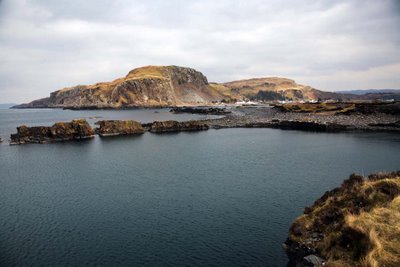
The grim walls of Dunure Castle on the Ayrshire coast can be best appreciated from the sea. After all, the sea was the motorway in the age of the great maritime castles of Scotland. At that time travel across land was time consuming, arduous and dangerous. The castles were built to control the faster sea routes used by travellers, traders and invaders.
They all have a history but few can have been witness to such an awful deed as the roasting of the Abbot of Crossraguel Abbey. In 1570 Gilbert, the 4th Earl of Cassillis, kidnapped the Abbot, Alan Stewart, and threw him into the Black Vault which lay deep within the walls of Dunure. Here he roasted Stewart on a spit until he agreed to sign over the Church's land to Gilbert.

Today you can paddle into the nearby fishing harbour of Dunure. The village pub, the Anchorage, is as convenient for the sea as the castle. It makes a welcome stop for the modern day seafaring kayaker.











